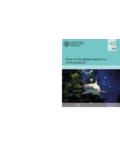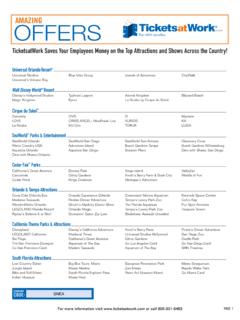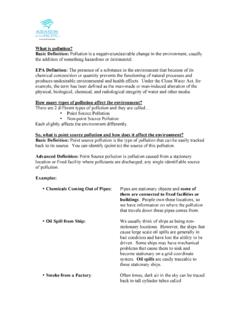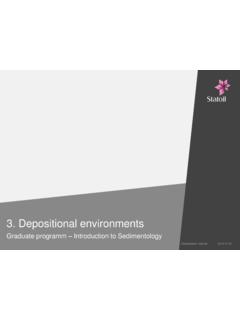Transcription of RECOMMENDED QUARANTINE PROCEDURES
1 Page 16 2007 Accreditation Standards and Related Policies RECOMMENDED QUARANTINE PROCEDURES QUARANTINE FACILITY: A separate QUARANTINE facility, with the ability to accommodate mammals, birds, reptiles, amphibians, and fish should exist. If a specific QUARANTINE facility is not present, then newly acquired animals should be isolated from the established collection in such a manner as to prohibit physical contact, to prevent disease transmission, and to avoid aerosol and drainage contamination. Such separation should be obligatory for primates, small mammals, birds, and reptiles, and attempted wherever possible with larger mammals such as large ungulates and carnivores, marine mammals, and cetaceans.
2 If the receiving institution lacks appropriate facilities for isolation of large primates, pre-shipment QUARANTINE at an AZA or AALAS accredited institution may be applied to the receiving institutions protocol. In such a case, shipment must take place in isolation from other primates. More stringent local, state, or federal regulations take precedence over these recommendations. QUARANTINE LENGTH: QUARANTINE for all species should be under the supervision of a veterinarian and consist of a minimum of 30 days (unless otherwise directed by the staff veterinarian). Mammals: If during the 30-day QUARANTINE period, additional mammals of the same order are introduced into a designated QUARANTINE area, the 30-day period must begin over again. However, the addition of mammals of a different order to those already in QUARANTINE will not have an adverse impact on the originally quarantined mammals.
3 Birds, Reptiles, Amphibians, or Fish: The 30-day QUARANTINE period must be closed for each of the above Classes. Therefore, the addition of any new birds into a bird QUARANTINE area requires that the 30-day QUARANTINE period begin again on the date of the addition of the new birds. The same applies for reptiles, amphibians, or fish. QUARANTINE PERSONNEL: A keeper should be designated to care only for quarantined animals or a keeper should attend quarantined animals only after fulfilling responsibilities for resident species. Equipment used to feed and clean animals in QUARANTINE should be used only with these animals. If this is not possible, then equipment must be cleaned with an appropriate disinfectant (as designated by the veterinarian supervising QUARANTINE ) before use with post- QUARANTINE animals. Institutions must take precautions to minimize the risk of exposure of animal care personnel to zoonotic diseases that may be present in newly acquired animals.
4 These precautions should include the use of disinfectant foot baths, wearing of appropriate protective clothing and masks in some cases, and minimizing physical exposure in some species; , primates, by the use of chemical rather than physical restraint. A tuberculin testing/surveillance program must be established for zoo/aquarium employees in order to ensure the health of both the employees and the animal collection. QUARANTINE PROTOCOL: During this period, certain prophylactic measures should be instituted. Individual fecal samples or representative samples from large numbers of individuals housed in a limited area ( , birds of the same species in an aviary or frogs in a terrarium) should be collected at least twice and examined for gastrointestinal parasites. Treatment should be prescribed by the attending veterinarian. Ideally, release from QUARANTINE should be dependent on obtaining two negative fecal results spaced a minimum of two weeks apart either initially or after parasiticide treatment.
5 In addition, all animals should be evaluated for ectoparasites and treated accordingly. AZA, (2007), RECOMMENDED QUARANTINE PROCEDURES , IN: 2007 Guide to Accreditation of Zoological Parks and Aquariums pp 16-22, 2007 Accreditation Standards and Related Policies Page 17 Vaccinations should be updated as appropriate for each species. If the animal arrives without a vaccination history, it should be treated as an immunologically naive animal and given an appropriate series of vaccinations. Whenever possible, blood should be collected and sera banked. Either a -70 C freezer or a -20 C freezer that is not frost-free should be available to save sera. Such sera could provide an important resource for retrospective disease evaluation. The QUARANTINE period also represents an opportunity to, where possible, permanently identify all unmarked animals when anesthetized or restrained ( , tattoo, ear notch, ear tag, etc.)
6 Also, whenever animals are restrained or immobilized, a complete physical, including a dental examination, should be performed. Complete medical records should be maintained and available for all animals during the QUARANTINE period. Animals that die during QUARANTINE should have a necropsy performed under the supervision of a veterinarian and representative tissues submitted for histopathologic examination. QUARANTINE PROCEDURES : The following are recommendations and suggestions for appropriate QUARANTINE PROCEDURES for several animal groups: PRIMATES REQUIRED: 1. direct and floatation fecals as described above 2. a minimum of 2 negative tuberculin tests using a tuberculin containing at least 1,500 units/.1 ml ( , Mammalian Human Isolate, Coopers Animal Health) or other appropriate regimen as necessary for the species in question ( , orangutans, New World primates, etc.)
7 3. CBC/sera chemistry panel 4. culture of feces for salmonella/shigella/Campylobacter 5. for appropriate species; , Old World monkeys, serology for Herpesvirus simiae (Herpes B) STRONGLY RECOMMENDED : 1. chest radiographs 2. appropriate viral panels (SIV, retrovirus type D) 3. urinalysis HOOFSTOCK REQUIRED: 1. direct and floatation fecals 2. TB test whenever possible STRONGLY RECOMMENDED : 1. CBC/sera profile 2. appropriate serology; , leptospirosis brucellosis, MCF, IBR, BVD, etc. Paired titers whenever possible 3. urinalysis 4. Johnes diagnostics if history of disease in herd of origin 5. Coggins test for equids 6. vaccinate as appropriate (See ZOO AND WILD ANIMAL MEDICINE, ME Fowler) AZA, (2007), RECOMMENDED QUARANTINE PROCEDURES , IN: 2007 Guide to Accreditation of Zoological Parks and Aquariums pp 16-22, Page 18 2007 Accreditation Standards and Related Policies SMALL MAMMALS/CARNIVORES REQUIRED: 1.
8 Direct and floatation fecals 2. vaccinate as appropriate (See ZOO AND WILD ANIMAL MEDICINE, ME Fowler and upcoming CURRENT VETERINARY THERAPY XI, WB Saunders Co.) STRONGLY RECOMMENDED : 1. CBC/sera profile 2. urinalysis 3. appropriate serology (FIP, FeLV, FIV) 4. heartworm testing in appropriate species BIRDS REQUIRED: 1. direct and floatation fecals 2. evaluate for ectoparasites 3. appropriate serological tests for psittacosis, and if positive, confirmed by culture STRONGLY RECOMMENDED : 1. CBC/sera profile 2. fecal culture for Salmonella sp. 3. fecal gram stain REPTILES AND AMPHIBIANS REQUIRED: 1. direct and floatation fecals for parasites followed by appropriate treatment 2. evaluate for ectoparasites STRONGLY RECOMMENDED : 1. veterinary examination 2.
9 CBC/blood chemistries 3. Paramyxo-viral titers for all viperids, incoming after being in QUARANTINE for 30 days 4. full post-mortem examination and histopathology on all specimens dying while in QUARANTINE FISH GENERAL COMMENTS: QUARANTINE standards for other zoo and aquarium animals cannot always be applied to fish, and adaptations must be made to the proposed PROCEDURES as they apply to fish populations. Proper and appropriate fish QUARANTINE is a vital component of any successful health management program for fish. QUARANTINE PROCEDURES must be tailored to individual species and require greater variation than QUARANTINE for other zoo and aquarium animals. It is in the interest of accredited institutions to carry out QUARANTINE PROCEDURES that are both effective and practical, leading to improved animal health.
10 Fish are usually acquired as populations, not as individual specimens, and individual identity may be impractical to establish. Few aquariums have the facilities and/or space to properly maintain large fish AZA, (2007), RECOMMENDED QUARANTINE PROCEDURES , IN: 2007 Guide to Accreditation of Zoological Parks and Aquariums pp 16-22, 2007 Accreditation Standards and Related Policies Page 19 specimens in separate life-support systems, making individual QUARANTINE of these specimens difficult. Aquariums may operate as open or semi-open systems, and specimens acquired from the surrounding waters of these institutions may not benefit from rigid QUARANTINE PROCEDURES due to constant introduction of potential disease organisms. Veterinarians may be part of the team supervising the QUARANTINE , but the institution should appoint the staff it feels has the best expertise to supervise and operate the QUARANTINE program.







